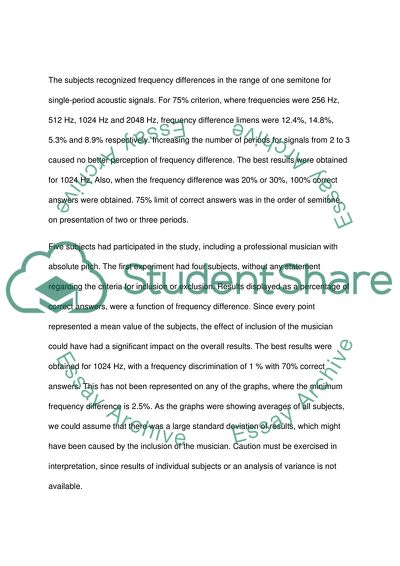Frequency Discrimination of Single-, Double-, and Triple-Cycle Research Paper. https://studentshare.org/medical-science/1724368-discrimination-of-single-and-triple-cycle-sinusoidal-acoustic-signals
Frequency Discrimination of Single-, Double-, and Triple-Cycle Research Paper. https://studentshare.org/medical-science/1724368-discrimination-of-single-and-triple-cycle-sinusoidal-acoustic-signals.


